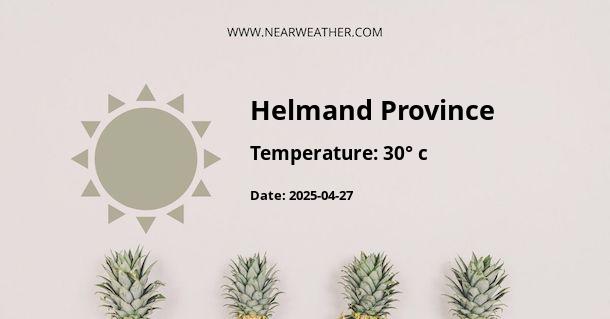Climate and Weather in Wilāyat-e Helmand, Afghanistan
Wilāyat-e Helmand, located in southern Afghanistan, experiences a desert climate with hot and dry summers and cool winters. The region is known for its extreme temperatures, limited rainfall, and arid landscape. Understanding the climate and weather patterns of Wilāyat-e Helmand is crucial for residents and visitors alike. In this article, we will provide a detailed overview of the climate and weather conditions in this region throughout the year.
Temperature
Wilāyat-e Helmand experiences high temperatures throughout the year. Summers are scorching hot, with average daytime temperatures reaching well above 40°C (104°F). The hottest months are typically June, July, and August, with temperatures occasionally exceeding 45°C (113°F) during heatwaves. Nighttime temperatures in summer drop to around 20-25°C (68-77°F).
Winters in Wilāyat-e Helmand are relatively mild compared to the scorching summers. Average daytime temperatures range from 15-20°C (59-68°F) during the day, with nighttime temperatures dropping to around 5-10°C (41-50°F). January is the coldest month, but temperatures rarely fall below freezing.
Rainfall
Wilāyat-e Helmand is characterized by low rainfall, making it a desert-like region. The majority of the precipitation occurs during the winter months, with December and January being the wettest period. The average annual rainfall in Wilāyat-e Helmand is around 100-150mm (4-6 inches), which is significantly lower than other regions in Afghanistan.
The limited rainfall and arid conditions make water scarcity a significant issue in Wilāyat-e Helmand. The region heavily relies on irrigation systems for agriculture, and droughts can have severe consequences for local farmers.
Wind and Dust Storms
Wilāyat-e Helmand is prone to strong winds and dust storms, especially during the dry season. These winds can reach speeds of 40-60 km/h (25-37 mph) and carry large amounts of dust, reducing visibility and creating hazardous conditions. Dust storms are most common in spring and early summer, with April and May being particularly affected.
Sunshine
Wilāyat-e Helmand enjoys abundant sunshine throughout the year. The region experiences clear skies for the majority of the year, with very few cloudy days. This makes Wilāyat-e Helmand an ideal location for solar energy projects and sun-related activities.
Climate Data
The table below provides a summary of the average monthly temperatures and rainfall in Wilāyat-e Helmand:
| Month | Average Temperature (°C) | Average Rainfall (mm) |
|---|---|---|
| January | 15 | 15 |
| February | 17 | 10 |
| March | 23 | 10 |
| April | 31 | 5 |
| May | 38 | 2 |
| June | 41 | 0 |
| July | 43 | 0 |
| August | 42 | 0 |
| September | 38 | 0 |
| October | 32 | 2 |
| November | 24 | 5 |
| December | 17 | 10 |
Source: Local Meteorological Department
Conclusion
Wilāyat-e Helmand experiences a desert climate with hot and dry summers, mild winters, limited rainfall, and frequent dust storms. The region's extreme temperatures and arid conditions pose challenges for agriculture and water management. Understanding the climate and weather patterns in Wilāyat-e Helmand is essential for planning activities and adapting to the harsh environment of this region.
A - Helmand Province's Latitude is 31.000000 & Longitude is 64.000000.
A - Weather in Helmand Province is 30° today.
A - Climate Conditions in Helmand Province shows clear sky today.
A - Humidity in Helmand Province is 12% today.
A - Wind speed in Helmand Province is 16.56 km/h, flowing at 256° wind direction. today.
